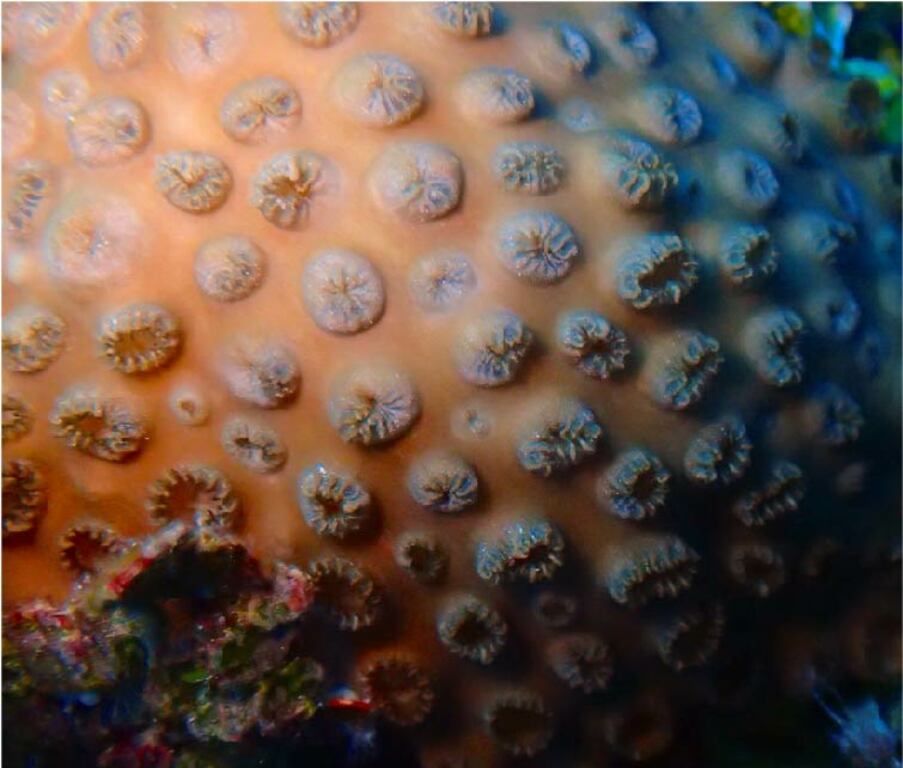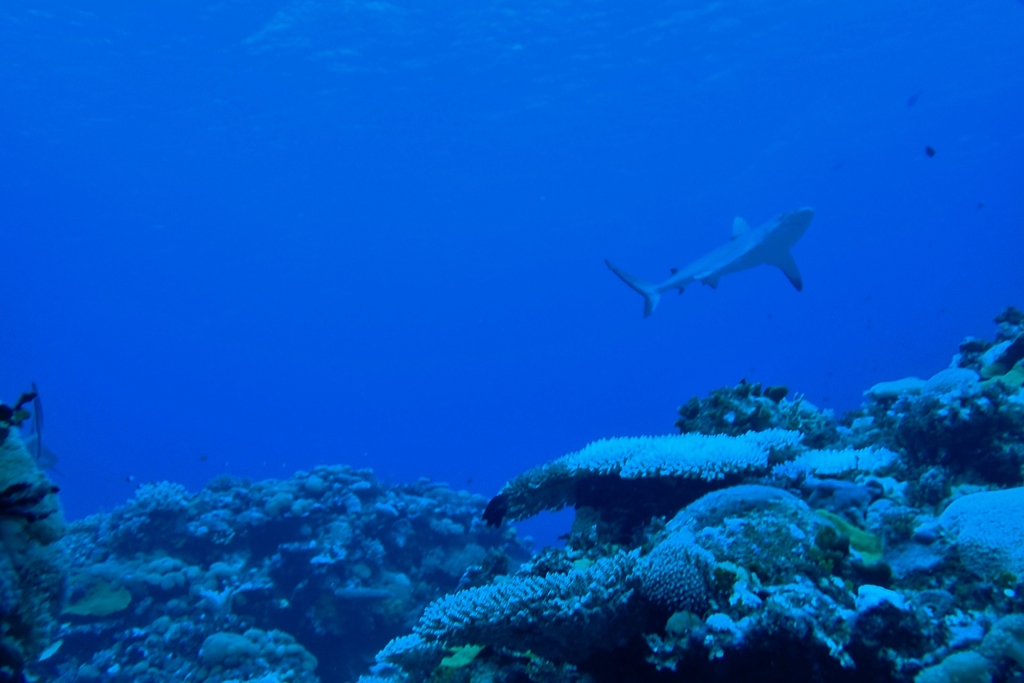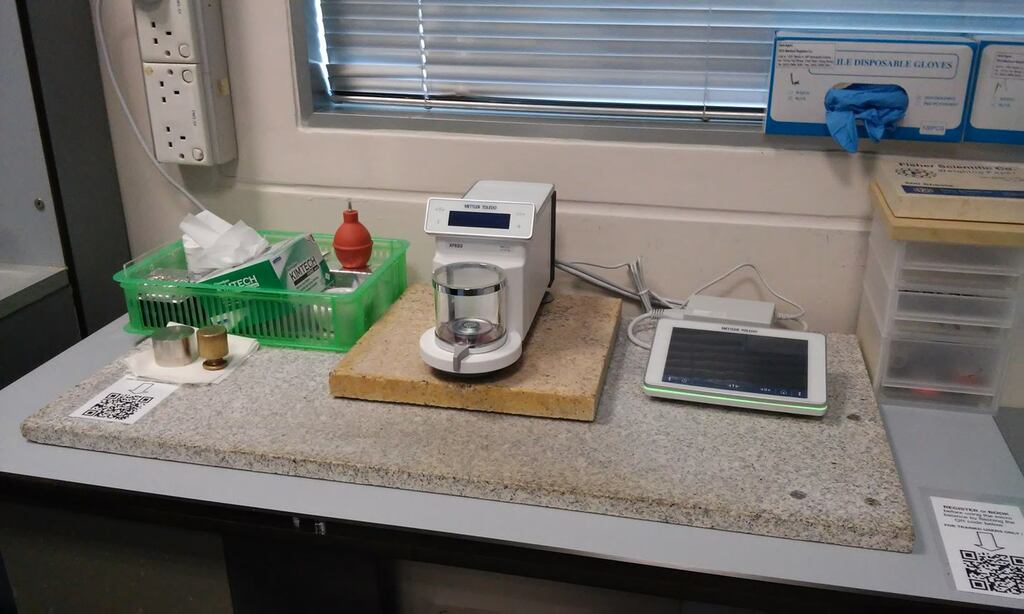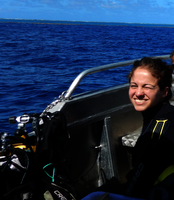Behind the science:
Populations of a widespread hexacoral have trophic plasticity and f...
2021, May 17
Posted by Veronica Radice
Fields
Ecology
Physiology
Focusgroups
Symbiodinium (zooxanthellae)
Zoantharia (Zoanthids)
Locations
New Caledonia
Republic of Palau
Taiwan
“Trophic interactions of widespread zoanthid species”
What was the most challenging aspect of your study (can be anything from field, lab to analysis)?
It was not easy to get to remote places to do the fieldwork, especially the uninhabited Chesterfield Islands (New Caledonia) and Dongsha Atoll (Taiwan), a small island with a research station and a Taiwanese coast guard base. The effort was worthwhile, and we were able to observe more pristine coral reefs compared to environments that suffer higher anthropogenic impacts.
What was the most memorable moment in undertaking this study?
I remember scratching my head when I first saw the results of the isotopic niche overlap between the coral host and associated endosymbionts. We predicted that the shallower populations would show higher niche overlap (more mutualist interaction) compared to the deeper populations (0-9m and 20-35m, respectively). This seemed plausible because there is more sunlight in the shallow stratum to support the photosynthetic activity of algal endosymbionts. However, we observed the opposite trend that we initially expected, and the shallow populations had a lower niche overlap compared to deeper ones. It is possible that the environmental conditions present in shallow strata may enable the coral species we studied to meet its nutritional requirements through heterotrophy. For instance, the higher wave action and currents in shallow waters could make it easier to capture planktonic preys. Still, this explanation needs to be tested with further experimental work.
 Palythoa tuberculosa, one of the most widespread hexacorals in the Indo-Pacific Ocean and the target species of our study.
(C) Maria Santos
[CC BY-NC 4.0]
Palythoa tuberculosa, one of the most widespread hexacorals in the Indo-Pacific Ocean and the target species of our study.
(C) Maria Santos
[CC BY-NC 4.0]
.jpg) Blacktip reef sharks were commonly spotted during sampling in the Chesterfield Islands.
(C) Maria Santos
[CC BY-NC 4.0]
Blacktip reef sharks were commonly spotted during sampling in the Chesterfield Islands.
(C) Maria Santos
[CC BY-NC 4.0]
What was your favorite research site in this study and why?
My favorite location was the Chesterfield Islands, an archipelago of uninhabited islets located >500km off the main island of New Caledonia. The weather was not great during the first days of our expedition and our dives were restricted to inside the atoll, which is already pretty amazing with many interesting reef formations and large populations of rays and sharks. Once the weather improved, we dove in the outer atoll and the underwater scenery of a drop off wall, at the middle of the Coral Sea, was pretty impressive.
Other than your co-authors, with whom would you like to share credit for this work?
We are thankful to our great lab folks that assisted with sampling. This work would not be possible without the help of our hosts at each fieldwork location, and we are very grateful for their kindness: the Institut de Recherche pour le Développement and Prof. F. Benzoni and Prof. Claude Payri in New Caledonia, Dongsha Atoll Research Station and Prof. K. Soong in Taiwan, and the SATREPS P-CoRIE project and the Palau International Coral Reef Center in Palau. We would also like to thank Ms. Leung Kit Sum who is the Senior Technical Officer at the Stable Isotope Ratio Mass Spectrometry Laboratory at the University of Hong Kong.
Any important lessons learned (through mistakes, experience or methodological advances)?
Although this was not possible in our study due to fieldwork logistics, it would be amazing to be able to do long-term monitoring of environmental parameters across the sampling locations. This would help to better explain the observed isotopic patterns.
Can we expect any follow-up on this work?
Yes, we are currently working on datasets to compare the isotopic niche of additional coral species.
 The tissue fractions of the coral host and its associated endosymbionts were weighted with a high precision scale for the isotope measurements (Laboratory at the University of Hong Kong, Hong Kong).
(C) Maria Santos
[CC BY-NC 4.0]
The tissue fractions of the coral host and its associated endosymbionts were weighted with a high precision scale for the isotope measurements (Laboratory at the University of Hong Kong, Hong Kong).
(C) Maria Santos
[CC BY-NC 4.0]
 Samples of P. tuberculosa were dried overnight before the preparations for analyses of the carbon and nitrogen stable isotope ratios.
(C) Maria Santos
[CC BY-NC 4.0]
Samples of P. tuberculosa were dried overnight before the preparations for analyses of the carbon and nitrogen stable isotope ratios.
(C) Maria Santos
[CC BY-NC 4.0]
Featured article:
|
|
Populations of a widespread hexacoral have trophic plasticity and flexible syntrophic interactions across the Indo-Pacific Ocean | article Santos MEA, Baker DM, Conti-Jerpe IE, Reimer JD (2021) Coral Reefs 40:543–558 |
|
